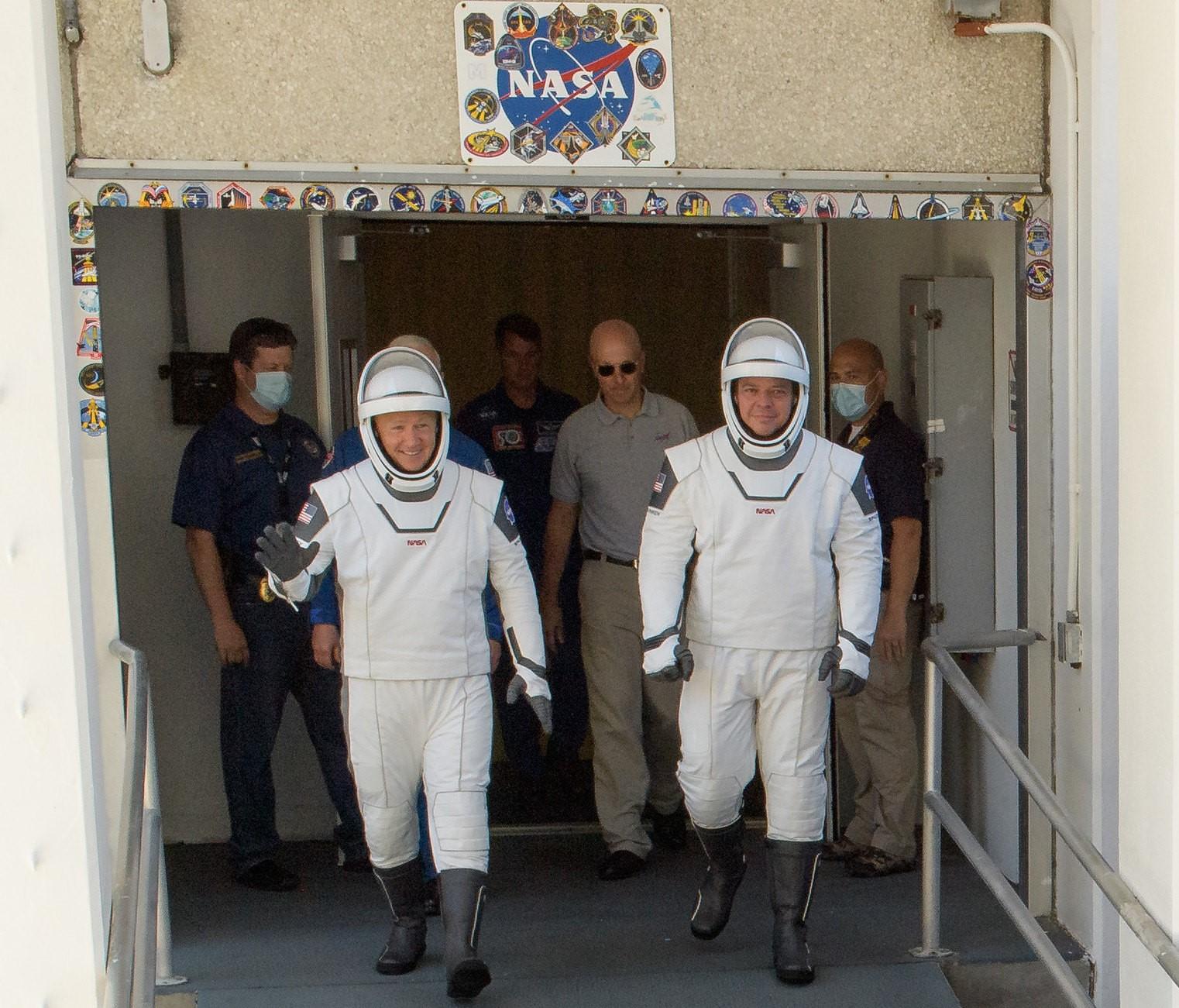
CAPE CANAVERAL—NASA and SpaceX are retargeting launch of the crewed Demo-2 flight test for 3:22 p.m. EDT May 30 after dicey weather at Kennedy Space Center prompted a scrub 16 min. before a liftoff attempt on May 27.
The SpaceX Falcon 9 had been slated to launch at 4:33 p.m. carrying two NASA astronauts on a shakedown flight of SpaceX’s new commercial space taxi, delivering the astronauts to the International Space Station (ISS).
The project, 10 years in the making, will be the first crewed orbital launch from the U.S. since the space shuttle program ended nine years ago and the first human spaceflight for SpaceX.
Veteran NASA astronauts Robert Behnken and Douglas Hurley donned their sleek, black-and-white, one-piece pressurized flight suits, walked out from crew quarters, bid goodbye to their families and climbed into the back seats of a Tesla Model X sport utility vehicle provided by SpaceX’s sister company, Tesla, for a ride to the launchpad.
NASA tightly controlled access to Kennedy due to ongoing COVID-19 restrictions, but among those in attendance hoping to watch the launch was President Donald Trump and members of his family, along with Vice President Mike Pence.
Pence arrived early enough to join SpaceX founder Elon Musk and NASA Administrator Jim Bridenstine to watch the astronauts walk out. In a NASA interview afterward, Musk said he told the astronauts’ families, “We’ve done everything we can to make sure your dads come back.”
Hurley and Behnken arrived at Launch Complex 39A about 20 min. later and rode a elevator to the 255-ft. level. From there they climbed stairs to reach the pad’s sleek new access arm. The crew paused to sign the wall in the white room leading to the Crew Dragon spacecraft, reviving a tradition for the next era in spaceflight borrowed from the previous ones.
The flight test with Hurley and Behnken on Demonstration Mission-2 (Demo-2) follows the uncrewed Demo-1 mission to the ISS in March 2019. NASA plans to combine the Demo-2 flight test objectives with an extended stay for the crew on the ISS to help fill a staffing shortage as U.S. paid ferry flights onboard Russian Soyuz spacecraft come to an end.
Since the end of the shuttle program, Russia has been operating the only crew flight service to the ISS. NASA hired SpaceX and Boeing in 2014 to develop U.S. alternatives under fixed-price, milestone-based development and flight service contracts.
Boeing’s uncrewed test of its CST-100 Starliner in December 2019 failed to reach the ISS due to software issues. The company plans to repeat the mission later this year and follow that with a crewed flight test, most likely in 2021.
In addition to ferrying astronauts to and from the ISS for NASA, SpaceX intends to fly paying passengers on Crew Dragon, possibly as early as next year, SpaceX President and Chief Operating Officer Gwynne Shotwell said.
If launch occurs on May 30, Hurley and Behnken are scheduled to reach the ISS at 10:20 a.m. EDT May 31. They will transfer to the current Expedition 63 crew for up to four months.
Completion of the Demo-2 mission will pave the way for the system’s certification and the start of operational crew rotation missions, the first of which is targeted to launch on Aug. 30.





